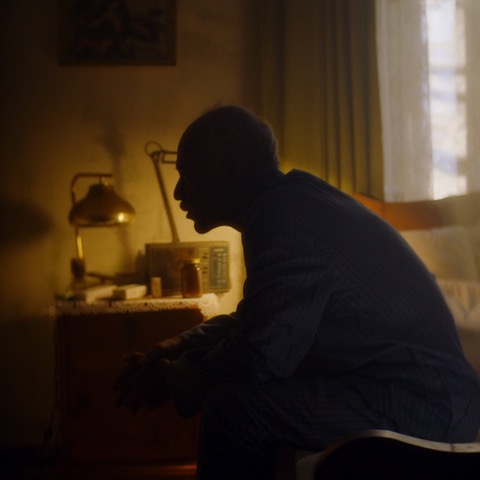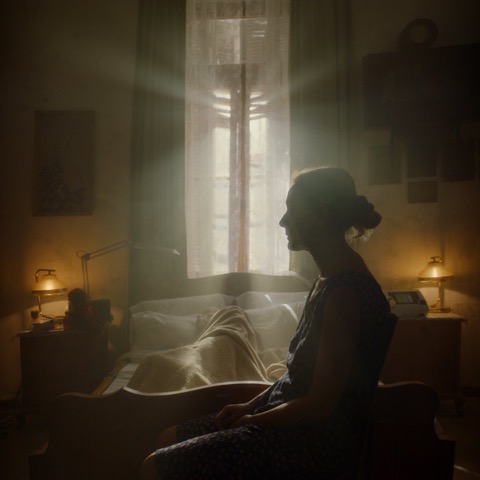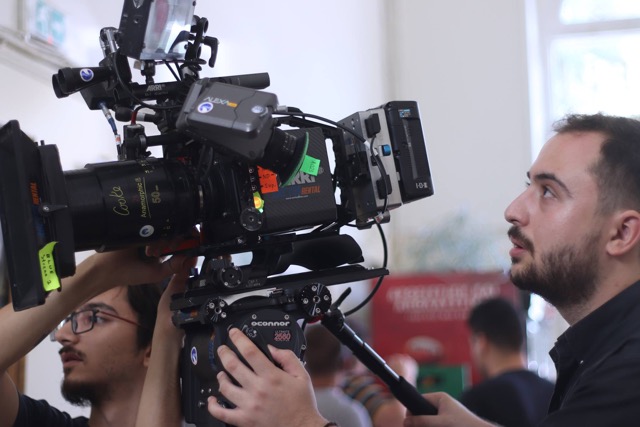
Life can simultaneously be astoundingly beautiful and agonizingly painful. Proof of this is on display in writer/director Iakovos Panagopoulos’s Flickering Souls Set Alight. An essential and prominent part of this film is the visual approach that Iakovos has gained via the mastery of his Director of Photography Petros Antoniadis. Panagopoulos approached the cinematographer due to his affinity for the DP’s lighting approach on Thodoris Vournas’s The Spectator. The goal for Flickering Souls Set Alight was a natural lighting aesthetic that drove the story partnered with camera work that would observe space and time, essentially making the camera another character. Having spent the better part of two years researching the physical and emotional toll Amyotrophic Lateral Sclerosis (ALS) takes on those afflicted and those whom love them, Iakovos wanted to place the audience within the experience through his film. Scenes like the one in which Persephone (Ioanna Tsagkarouli) cuddles in bed with her ALS stricken husband Aris (Yannis Kokiasmenos) communicates all of the romance and devastation of the situation without uttering a single syllable. With light and lenses, Antoniadis proves himself to be a great painter whose canvas is the medium of modern times. The grandson of the noted painter and photographer Petros Vlahakis, Petros has established with his work that whether nature or nurture, there is a familial DNA of an extraordinary ability in play here. Along with writer Konstantinos Karakostas (who recently worked on the Netflix premiering film Jiu Jitsu which stars Oscar Winning Actor Nicholas Cage), Panagopoulos and Antoniadis have manifested a film experience which manages to achieve the highest goal of all, true connection with a part of mankind that is too often overlooked or avoided.

The visual style of Flickering Souls Set Alight is founded in an idea the filmmakers refer to as the “square of memories”, a reference to the pictures and photos that the families often place within the line-of-sight of bed ridden ALS patients. Taking on this concept and establishing a claustrophobic mood necessitated some real ingenuity. Petros informs, “One of my very first thoughts when getting into a project is the aspect ratio, and here it only made sense to choose a format that could help bring all these elements to the screen. The unconventional square (1:1) felt so right for the film. In these oners [single take scenes] we needed to capture everything necessary to tell the story but the tight location was not allowing the camera to move freely and by cropping we would lose a lot of vital visual elements in our frames. We needed to get to 1:1 without losing any horizontal pixels of the sensor. The only solution seemed to ‘add’ information to the sensor vertically. That’s where the idea of using the vertical-to-the-sensor anamorphic format crossed my mind. Additionally, romantically wise, someone could say that as Aris’s entire world had come upside down and thus our lenses adopted this.” A year-long testing process with the anamorphic lens mounted sideways led to the creation of original software to “desqueeze” the film to usable levels and an innovation of the stunning visuals in Flickering Souls Set Alight. To authentically relate the way the film’s characters see their world, Petros Antoniadis reimagined the way he approached cinematography. Repeatedly throughout the film, the camera becomes almost overwhelming in its presentation of raw emotions that are so visually attractive that one cannot bear the thought of looking away while still twisting in the despair of the characters. In perhaps the most striking scene of the film, Persefoni comes to an acceptance of what must be done, the contrast of her silhouette against the eerie light that “showers” Aris. Light versus darkness; the boundaries within which her emotional state oscillates every day, especially at this moment. Having made the final choice, she goes to kiss him while walking out of darkness and into the light that will set Aris free; meeting him inside this light at the most vividly illuminated frames of the film.

At one point Persephone speaks directly to the camera from her kitchen/dining room saying, “And the moment I feel that Aris is there. That he exists…” the drama comes from the acting performance set amidst the starkness of the room which Petros has somehow correlated with the intensity of the dialogue without overshadowing it. What one instantly recognizes upon seeing this film is that, in an age when everyone has convinced themselves that filters and smart phones have enabled them to create transfixing images, the true art is enabling an image to possess the essence of the emotion without doing so in a heavy handed manner. The public and film industry has already confirmed this with a slew of recognitions for the film such as Best Film and Best Cinematography awards at the Asian Cinematography Awards and Canadian Cinematography Awards, as well as Best Cinematography awards for Petros at the European Cinematography Awards and Los Angeles Film Awards.
Writer: Coleman Haan


Be the first to comment on "The Innovative Transference of Flickering Souls Set Alight"